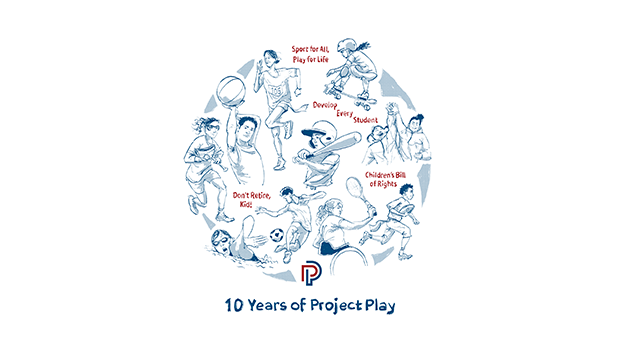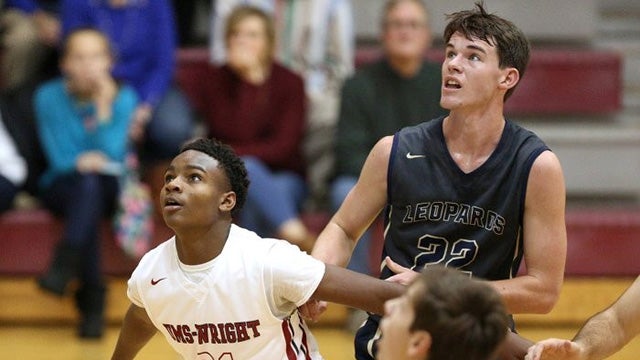
Photo Credit | iStock Photo
During 2015 Spotlight Health, the Aspen Institute Sports & Society Program released a white paper that bears consequence for the health of the nation, “Physical Literacy in the United States: A Model, Strategic Plan, and Call to Action.” Supported by the Robert Wood Johnson Foundation, the paper builds on research associating movement competence with physical activity.
Miami-Dade County Public Schools Physical Education District Director Jayne Greenberg is a member of the 15-person working group that contributed to and reviewed the report.
I’ll always remember the first time I saw a student’s face light up when they struggled to make that first basket and suddenly the ball floated through—nothing but net and a crisp swoosh. Or the first time a student hit the softball from a pitch without using a tee. These are the moments that students realize how practice, perseverance, and persistence pay off in physical education. These moments are reflected with a sense of pride, accomplishment, and confidence, and an overarching feeling of “I can do this!”
As an educator, it’s these seemingly small moments that let us know we’re setting our students up for long-term success. Most people today might not think that physical education has that kind of lasting influence, but after more than 30 years in education, I’ve seen first-hand that when physical education instruction is delivered as a standards-based curriculum, it can positively impact students’ health, academic performance, and development of their physical literacy—the confidence, ability, and desire to be physically active for life.
Miami-Dade County Public Schools constitute the fourth largest school district in the United States, serving a large urban and multi-cultural population. Overall, our student population is 69 percent Hispanic, 22 percent Black; 7 percent White; and 2 percent “other.” More than half of our students speak languages other than English as their primary language and 73 percent of our students receive free or reduced lunch. As with all of that diversity of backgrounds and challenges, the need to provide daily P.E. in elementary schools, taught by a certified physical educator, is paramount, and we’ve done that since I started back in 1977. We fund what’s important and schedule physical education when the classroom teacher has their planning time. All teachers in each grade level have a common 30-minute prep period each day, which makes it possible for the students to have P.E.
Our enrollment numbers from 2014-2015 tell a fuller story:
- All 158,560 students in grade K-5 all take daily physical education
- Of the 73,830 student in grades 6-8, 100 percent have taken P.E. for at least one semester, and most took it for both
- Despite the fact that high school students only need one semester of P.E. to graduate, nearly 88,000 of the 109,300 students enrolled in grades 9-12 took P.E. during the year
- Approximately 2,500 students with physical and/or developmental disabilities participate in Special Olympics and the district’s Sports Program for Students with Disabilities
To implement a quality P.E. program that contributes to students’ development of physical literacy, comprehensive educational standards must exist and delivery of curriculum must be age-appropriate. For standards, Miami-Dade County Public Schools relies on SHAPE America’s “National Physical Education Standards and Grade-Level Outcomes.” Standards aside, though, content must be meaningful to students and include assessments that provide immediate feedback so students can continue to improve as they move through the curriculum and turn to applications, like sports or other physically active hobbies.
In daily P.E., we introduce basic, transferable skills to students, instilling confidence and a desire to be active for life. Then, as an extra-curricular supplement, our schools also offer a variety of sports at the intramural and competitive levels — 11 for boys and 12 for girls at the middle school level and 15 for each gender at the high school level. Together, P.E. and school-sponsored sports create a cycle: once a student has mastered the basic movement skills in P.E., we can then encourage them to participate in after-school sports and activities. The diversity of sports offered steers students away from pressure to specialize at a young age and gives them yet another opportunity to develop physical literacy.
Between P.E. and school-sponsored sports, we aim to lay a foundation for our students to flourish. We just want that light to go on in children’s eyes, where they leave school physically literate with the ability, confidence, and desire to be physically active for life.
Jayne Greenberg is the district director of physical education for the Miami-Dade County Public Schools. She is also a member of the President’s Council on Fitness, Sports, and Nutrition.

